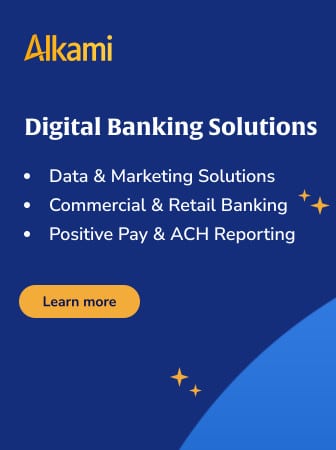To many bankers, the idea of uplevelling their LinkedIn activity can feel about as daunting as scaling Mount Everest.
But while reaching the 17,000-foot summit of Mount Everest takes years of planning and training, getting noticeable results on LinkedIn is possible with a commitment of just 15 minutes a day.
For bankers to reach their “PEAK” on LinkedIn, it takes a philosophy of presence, a consistent level of engagement, true authenticity that generates trust, and a passion to expand their knowledge of this ever-evolving platform.
This is especially important for bankers who have sales responsibilities, such as commercial loan officers, as well as for those who support sales in marketing. Here’s how to reach the summit where just one connection can become a multi-million-dollar commercial loan.

The Financial Brand Forum Kicks Off May 20th
Explore the big ideas, new innovations and latest trends reshaping banking at The Financial Brand Forum. Will you be there? Don't get left behind.
Read More about The Financial Brand Forum Kicks Off May 20th

Industry Cloud for Banking from PwC
PwC’s Industry Cloud for Banking applies our deep industry knowledge to your specific business needs
Start with a Philosophy
Define your purpose. Joining LinkedIn because 1 billion others have is a digital death sentence. LinkedIn lemmings become LinkedIn ghosts, who can actually do harm to their personal and organization’s brands. So consider your reasons for being on LinkedIn and why you should engage with people there.
You’ll have plenty of reasons if, for example, you are:
- A new banker or new to a market looking to expand your network and foster connections that lead to meaningful conversations.
- Focused on building your credibility in a particular niche by creating a thought leadership and social collaboration approach.
- A CEO or CMO who uses LinkedIn to amplify the bank’s brand, model the way for others in the organization and communicate community commitment.
LinkedIn connections are not baseball cards. Collecting thousands of connections is not the idea. So don’t think of it as a numbers game, where you are measuring success by the overall number of connections you have or the number of “likes” you get on a post.
What if you post something insightful about the local economy and it gets three likes, but all three are from local community leaders? And one of those people happens to be an executive at a manufacturing business in your county? Maybe one person even writes a comment that you can now respond to. Surely the few minutes you spent sharing that information has paid off by creating opportunities for you to be seen as knowledgeable on such topics by some key people — who, by the way, all have followers of their own who now could end up seeing your post too. In select cases, you could build on that with a next step — for example, messaging the manufacturing executive some regional data you know would be helpful market intelligence.
Your goal is not merely connections and interactions — but meaningful connections and interactions. You are relationship-building.
So, it’s important to consider: Who will you connect with and whose connections you will admit to your network? Rather than accept everyone or just the people you know, develop your own criteria for acceptance or proactive outreach.
Ignore a connection request at your own risk. In a recent training class, a banker related his sad story of how he ignored a connection request from someone in Seattle. A month later the banker was at a large reception at a hospital in his community and the woman who sent the request approached him. He remembered her maiden name and she told him that she reached out on LinkedIn because she knew he was a great banker and that her husband was just named CEO of that hospital. When he did not respond, she moved on, connected with another banker in town and moved all the accounts to that bank.
Integrate your sales process. I’ve found that many bankers think of LinkedIn as being outside their sales routines, so they don’t use it for steps like call prep, follow up and ongoing value creation. In contrast, those who use LinkedIn effectively open more doors and initiate more meetings. One community banker I know generated more than $10 million in new loans and deposits in 2023 when he began to blend LinkedIn into his sales methodology.
LinkedIn’s own research also indicates that the platform can make a difference when it comes to sales, as we discussed in more detail in this previous article for The Financial Brand. The findings show, for example, that 79% of buyers are more likely to consider a brand if the salesperson they’re working with has an informative LinkedIn profile.
Engage with Your LinkedIn Connections
Are you still using that gym membership you signed up for right after the new year? Similar to staying in shape, success on LinkedIn requires consistency.
Start small and expand from there. Consider adopting a 3X5X15 mindset: Make it a habit to do three LinkedIn activities a day, five days a week, taking up a total of just 15 minutes. You will be amazed at the results.
The activities might be:
- Connecting with three new people several days a week.
- Commenting on someone else’s content (no lazy likes).
- Posting something you write yourself or reposting an article from someone you follow.
- Sending a message to a 1st degree connection about a timely webinar you are attending.
- Using social proximity to create a list of CFOs in your zip code in the manufacturing space. This targeting helps you maximize your finite sales time.
- Doing a short walk and talk video (90 seconds or less) sharing an issue facing your clients and how one was able to overcome that challenge. Forget the products. Lead to your solution, not with your solution.
Do some social listening as well. Ring the bell on the profile of key leaders in your community or within your industry targets. When they post, you will see their content in your notifications. Read these for your own knowledge, comment on it to get on their radar or reshare it so that others can benefit from the content.
Read more:

Be Authentic
Oscar Wilde once said, “Be yourself — everyone else is taken.” LinkedIn relationships thrive on trust, and authenticity is key to building confidence with your audience.
Use your voice to share ideas that emanate from your experience and come from your heart. When you are authentic about your connection requests, your content and your comments, you build conviction with your network, opening doors to real-life conversations.
Your profile is your 24/7 calling card. And much like a newspaper (remember them?), what’s above the fold creates interest. So make sure the following elements reflect on you in the best way possible.
Background: Use a background that articulates your personal authenticity, ideally one that connects your brand to your organization’s.
Photo: Share a current photo. We all looked better in our 20s. If you are 45 now, your photo should be identical to what I see when I meet you at a networking event.
Headline: Your headline should be unique and help make you memorable. Commercial Lender at … Treasury Management Officer at … SVP Team Leader at … These are authentic, but no one suggested that authenticity and boring are synonymous. How about these instead?
- Banker in Charge of Getting Things Done in NAME OF CITY.
- The Last Banker You Will Ever Need in NAME OF CITY.
- Guiding Small Business Owners to Record Growth and Profitability.
Embracing LinkedIn authenticity is about being yourself, creating value, standing out by sharing your knowledge and experience, connecting with others, boosting confidence, and creating a sustainable personal brand that resonates with your audience.
See more on social media in banking.

Knowledge Is Power (in More Ways Than One)
LinkedIn undergoes frequent changes that impact user experience. Staying informed about these enhancements maximizes your ability to use the platform effectively. More than 25 new features and 30 updates happened just in the first few months of 2024, according to Kevin D. Turner, a LinkedIn expert. There were more than 150 changes in 2023.
Check out your profile — one day, the components are in a certain order, and the next day, without any notice, everything might be arranged very differently. One way to stay on top of these modifications is to follow folks like Turner, Brynne Tillman, Eric Cook and others.
But while information about the platform is important, how you educate your network is more critical. By sharing valuable content around relevant industry news, and valuable ideas, you stand out. Do this and you won’t have to call yourself a thought leader, your network will view you as one. More than that, people will see you as generous, working to make every business in your community thrive.
When the Federal Reserve held rates steady in January, I asked a banker what effect that might have. As I recorded, she was able to articulate three key outcomes this would have and some thoughts on what to do next. We put this text into ChatGPT to help create a LinkedIn post. She modified what was written in her own voice and posted it. The more than 50 comments she received were great. Better were the two telephone calls she received from business owners wanting to start a conversation.
Reaching your PEAK on LinkedIn is achievable. It just requires dedication and consistent effort. Take it one step at a time, and your journey to the summit is in the bag.
Jack Hubbard has served on the faculty at 13 of the nation’s top banking schools, is a regular keynote presenter for state and national banking associations, and hosts a podcast called “Jack Rants with Modern Bankers.” He is also chief experience officer of The Modern Banker, which coaches financial services professionals on converting LinkedIn connections into trust-based conversations. He can be reached at [email protected].







